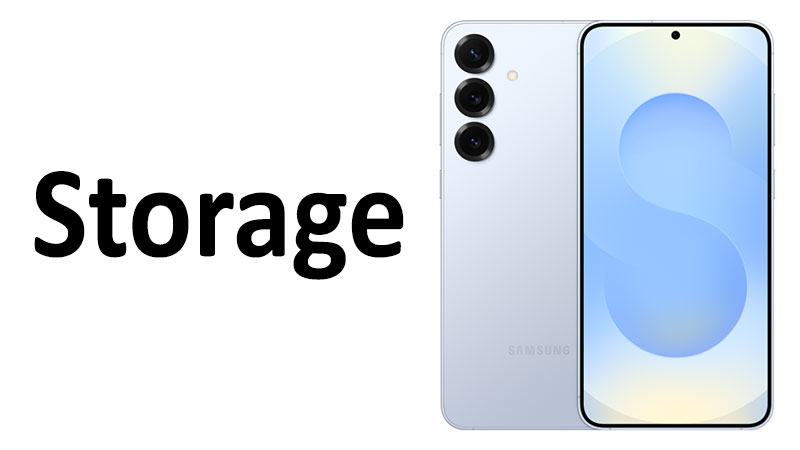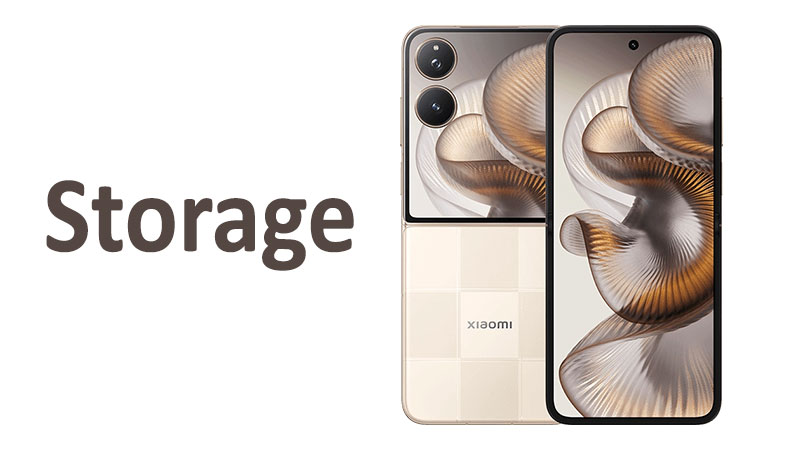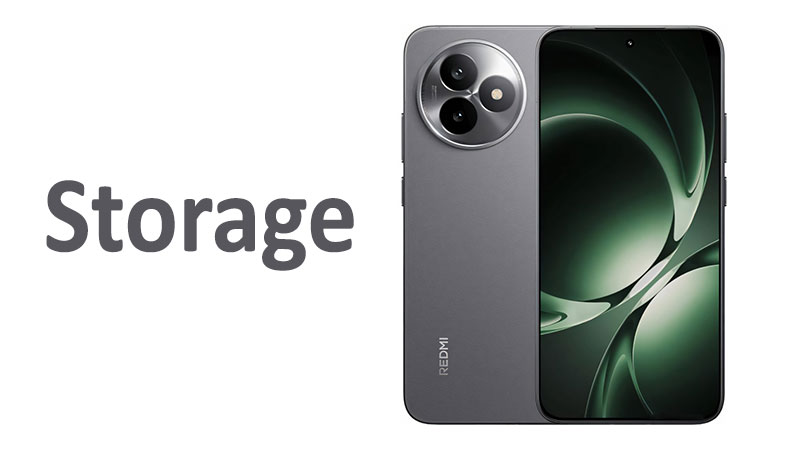Samsung Galaxy S25 FE storage is a critical factor for any potential buyer. Choosing the right configuration directly impacts your daily smartphone experience. It affects long-term usage and the device’s overall performance. This comprehensive guide explores all aspects of the S25 FE’s internal memory. We will detail the available capacities. We will also analyze the underlying storage technology. This information will help you make a well-informed purchasing decision. The S25 FE continues Samsung’s commitment to premium features at a more accessible price point. Its storage options are designed to meet diverse user needs. Understanding these specifications is essential. It ensures your new phone meets both your current and future demands.
A Detailed Look at S25 FE Storage Configurations
The Samsung Galaxy S25 FE is positioned as a fan-favorite model. It balances flagship performance with a more competitive price. The storage and memory configurations reflect this strategy. Samsung offers multiple tiers to accommodate various user budgets and requirements. This variety is a major selling point for the device.
Available Configurations and RAM Breakdown
Samsung provides a streamlined set of choices for the S25 FE. All three primary storage options are paired with a generous amount of RAM. This standardized memory ensures consistent multi-tasking performance across all models.
The available configurations are:
- 128GB Internal Storage with 8GB RAM
- 256GB Internal Storage with 8GB RAM
- 512GB Internal Storage with 8GB RAM
The inclusion of 8GB of RAM on the base model is noteworthy. This is a significant performance metric. It allows the S25 FE to handle intensive gaming and extensive app switching easily. Previous FE models sometimes offered a lower RAM tier for the cheapest option. Maintaining 8GB across the board is a premium decision by Samsung. It boosts the device’s value proposition considerably.
Specialized Comparison: S25 FE RAM vs. Previous FE Models
The consistent 8GB RAM across the S25 FE lineup is a key upgrade. The Galaxy S21 FE, for instance, offered a 6GB RAM option with its 128GB storage. Users of that model might have experienced limitations during heavy use. The S25 FE eliminates this bottleneck entirely. It provides a fluid user experience regardless of the selected storage capacity. This standardization minimizes the performance gap between the different storage tiers.
The Technology Behind the Speed: Storage Type
Storage capacity is only half the story. The type of memory chip used determines the speed. Faster storage means quicker app loading and faster file transfers. It also contributes to a smoother overall operating system feel. Samsung often utilizes the industry’s most advanced memory standards.
UFS 4.0 vs. UFS 3.1: Speed and Efficiency Comparison
The Galaxy S25 FE is expected to feature either Universal Flash Storage (UFS) 4.0 or UFS 3.1. The specific inclusion often depends on market conditions or the device tier. However, both technologies represent elite performance standards.
UFS 4.0 is the current industry leader. It offers remarkable improvements over its predecessor. UFS 4.0 boasts sequential read speeds up to 4,200 MB/s. It also achieves sequential write speeds up to 2,800 MB/s. These speeds are nearly double those of UFS 3.1. Furthermore, UFS 4.0 is more power-efficient. It uses less power per megabyte of data transferred. This directly contributes to longer battery life during high-demand tasks.
UFS 3.1 is still an extremely fast and capable standard. It provides sequential read speeds around 2,100 MB/s. Write speeds hover near 1,200 MB/s. Many flagship phones from the past two years used UFS 3.1 successfully. If the S25 FE uses UFS 3.1, its performance will still be excellent. However, a move to UFS 4.0 would solidify its long-term viability. The increased speed benefits massive app updates and transferring 8K video files.
The Impact of Storage Type on Daily Performance
The type of storage heavily influences the perceived speed of the phone. Faster storage technology leads to several key benefits for the average user.
First, app installation times decrease significantly. Downloading a large game and installing it becomes a much quicker process. Second, faster read speeds mean apps launch almost instantaneously. The operating system boots up faster as well. Third, the phone’s camera benefits greatly. Writing large, high-resolution photo and video files to memory happens quickly. This minimizes the lag between capturing shots. It also prevents the phone from slowing down during bursts of photography. Users who frequently record 4K or 8K video will especially notice the difference. The efficiency of UFS 4.0 also slightly improves battery performance. This happens because the chip finishes its work faster and returns to an idle state.
Capacity Deep Dive: Who Needs What?
Choosing the right capacity is a crucial decision. You cannot upgrade the internal storage later. This makes your initial choice permanent. Buyers must accurately assess their usage habits to select the most suitable option. Buying too little storage is frustrating. Buying too much means spending money unnecessarily.
The 128GB Option: The Budget Baseline
The 128GB model serves as the entry point for the Galaxy S25 FE. It is the most affordable choice. This capacity is suitable for a specific type of user.
Pros and Cons of 128GB
Pros:
- It offers the lowest overall purchase price.
- The capacity is sufficient for light to moderate users.
- It is ideal for users who rely heavily on cloud storage.
- The phone still features the high 8GB RAM for smooth multi-tasking.
Cons:
- The usable space is much less than 128GB due to the operating system.
- It fills up quickly with modern apps and high-resolution media.
- It offers little headroom for future data growth or large game installations.
- The resale value may be slightly lower compared to higher capacities.
Who Should Choose 128GB?
The 128GB configuration is best for users who primarily stream their content. This includes streaming music from Spotify or watching videos on YouTube and Netflix. It is also perfect for users who take only a modest amount of photos. If you regularly back up your data to Google Photos or other cloud services, 128GB is a viable option. It is the definition of a budget-conscious, average-use choice.
The 256GB Sweet Spot: The Best Value
The 256GB option often represents the best blend of cost and utility. It provides enough space for most users to feel comfortable. This model minimizes storage anxiety for several years.
Pros and Cons of 256GB
Pros:
- It provides ample storage for a majority of smartphone users.
- It offers a great balance between capacity and cost.
- This capacity is future-proof for the next two to three years of heavy usage.
- It handles large downloaded media libraries and several demanding games.
Cons:
- The cost is notably higher than the 128GB baseline model.
- Extremely heavy 4K/8K video creators may still eventually run out of space.
Who Should Choose 256GB?
The 256GB configuration is ideal for the power user who is not a professional media creator. This includes mobile gamers who download several high-demand titles. It is also perfect for travelers who download movies for offline viewing. Furthermore, it suits any user who takes many photos and videos but only performs an annual cleanup. Most people will find the 256GB storage to be perfectly adequate. It provides excellent peace of mind.
The 512GB Max: The Power User Choice
The 512GB configuration is the top-tier offering for the S25 FE. It is designed for the most demanding users. This capacity is essentially overkill for the casual phone owner.
Pros and Cons of 512GB
Pros:
- It offers virtually unlimited storage for years of average use.
- It is essential for professional creators who shoot large video files.
- The phone’s long-term resale value is typically maximized with this capacity.
- It allows for massive collections of downloaded games and media.
Cons:
- It comes with the highest initial price tag.
- Many users will never utilize the entire space provided. This means a portion of the cost is essentially unused.
Who Should Choose 512GB?
The 512GB S25 FE is a must-have for content creators. If you regularly record hours of 4K 60fps or 8K video, this capacity is essential. It also caters to audiophiles who download large, lossless music libraries. Finally, it suits anyone who refuses to use cloud storage for privacy or convenience reasons. If you absolutely hate deleting anything, 512GB is your best friend.
Key Buyer’s Guide Considerations
The decision process involves more than just selecting a number. Several external factors and technical details must be weighed. A smart buyer considers the full picture before committing to a purchase.
Internal Storage vs. MicroSD Card Support
A critical point for any buyer is the absence of a microSD slot. Consistent with most flagship and FE models, the Samsung Galaxy S25 FE does not include expandable storage. This makes the initial capacity decision absolutely final.
This lack of expandable storage is a major distinction. Older Android phones allowed users to buy a smaller internal storage model. They could then use a cheap, high-capacity microSD card to supplement it. Since the S25 FE does not offer this flexibility, buyers must size up their needs. If you think 128GB might be tight, you should purchase the 256GB model immediately. The price difference between internal storage tiers is often high. However, it is the only way to gain more space on the S25 FE.
The lack of microSD support is a trade-off. It allows Samsung to use faster UFS internal storage. UFS is significantly quicker than any currently available microSD card. Therefore, the internal storage offers superior performance.
Longevity and Future-Proofing Your Investment
Storage capacity is the primary factor in a phone’s lifespan. Technology changes quickly. File sizes constantly increase. A photo taken five years ago was maybe 5MB. Today, a single high-resolution photo from the S25 FE could exceed 20MB. A three-minute 4K video is a multi-gigabyte file.
Users generally keep a phone for two to three years. Consider how much data you will accumulate during that period. If you currently use 80GB on your old phone, the 128GB S25 FE might seem fine. However, your usage will likely grow by 50GB to 100GB over two years. This is due to OS updates, new apps, and higher-quality media. Choosing the 256GB model offers a comfortable buffer. It prevents you from needing to manually manage storage space constantly. Future-proofing is about avoiding inconvenience later.
Specialized Comparison: S25 FE Storage vs. Galaxy S24 FE
Comparing the S25 FE to its predecessor, the Galaxy S24 FE, reveals a clear trend. Samsung consistently upgrades the underlying technology.
The S24 FE likely introduced UFS 3.1 across all models. The S25 FE may move towards UFS 4.0 for the 256GB and 512GB variants. This means the S25 FE offers a tangible speed boost. App loading times and file transfers are visibly quicker.
In terms of capacity, the S24 FE might have retained a lower RAM option in some markets. The S25 FE’s commitment to 8GB RAM across all storage options is the biggest upgrade. This standardized memory configuration provides a much more powerful and stable baseline performance for the entire lineup. The S25 FE delivers a better experience at every capacity point because of this memory consistency.
Pros, Cons, and Crucial Takeaways
Summarizing the advantages and disadvantages of the S25 FE storage setup helps clarify the buying decision. The overall package is strong. However, buyers should be aware of certain constraints.
Pros of the Samsung Galaxy S25 FE Storage
The S25 FE storage setup has numerous strengths that appeal to both general users and enthusiasts.
- High-Speed Technology: The use of UFS 3.1 or 4.0 ensures lightning-fast data transfer. This positively impacts every interaction with the phone.
- Generous Base RAM: Standard 8GB RAM guarantees excellent multi-tasking performance. This eliminates potential lag when switching between numerous apps.
- Diverse Capacity Options: The 128GB, 256GB, and 512GB tiers cater to a full range of user needs and budgets.
- Performance Consistency: All three storage tiers benefit from the same robust 8GB RAM. This means users don’t sacrifice speed for savings on storage.
Cons of the Samsung Galaxy S25 FE Storage
Despite its strengths, the S25 FE storage has one major functional drawback for some users.
- No Expandable Storage: The lack of a microSD slot is a hard limit. Users must choose the correct capacity from the start. There is no possibility of a cheap future upgrade. This can be a deal-breaker for some long-time Android users.
Crucial Takeaways for Buyers
Before finalizing your S25 FE purchase, consider these essential points. They summarize the most important aspects of the storage decision.
- Prioritize Capacity Over Budget: Since you cannot add storage later, always purchase the capacity that exceeds your current needs. It is far cheaper to pay for the capacity upgrade initially than to replace the phone later.
- Assess Your Media Habits: If you download movies, music, or high-end games, 256GB should be your minimum target. Stream-only users can comfortably choose the 128GB option.
- Speed is Guaranteed: Regardless of the capacity you select, the speed of the UFS technology and the 8GB of RAM will ensure the phone feels snappy and responsive. Do not worry about a slow base model.
- Understand Usable Space: Remember that the operating system and pre-installed apps consume a significant portion of the advertised capacity. A 128GB model may offer closer to 105GB of usable space out of the box.
Conclusion
The Samsung Galaxy S25 FE storage options are thoughtfully designed. They provide a high-performance foundation for a near-flagship experience. The availability of 128GB, 256GB, and 512GB ensures choice for all consumers. Crucially, the standardized 8GB of RAM across all configurations guarantees superb multi-tasking capabilities. This is a significant improvement over some earlier FE models.
The primary purchasing challenge is the lack of a microSD card slot. This constraint means the initial capacity decision is permanent. Therefore, buyers must look ahead. The 128GB model suits the light user who primarily relies on cloud services. The 256GB option is the clear sweet spot. It offers excellent future-proofing and ample space for most mobile gamers and media consumers. The 512GB variant is reserved for professional content creators and data hoarders.
Ultimately, the S25 FE delivers on its promise. It combines fast UFS technology with powerful RAM. This creates a responsive, high-value device. By carefully evaluating your personal data habits and future needs, you can select the perfect S25 FE model. This choice will ensure years of hassle-free performance.
FAQ
What is the fastest storage type used in the Samsung Galaxy S25 FE?
The S25 FE is expected to feature either UFS 3.1 or the newer, faster UFS 4.0. Both types are exceptionally quick. They ensure very rapid app loading and file transfer speeds.
Can I add a microSD card to increase the Samsung Galaxy S25 FE storage later?
No, the Samsung Galaxy S25 FE does not include a microSD card slot for expandable storage. The capacity you purchase initially is the maximum internal memory the phone will have.
Why is 8GB RAM included with all S25 FE storage capacities?
Samsung standardized the RAM at 8GB to guarantee consistent, high-level multi-tasking performance across the entire lineup. This ensures that the base model feels just as fast as the top-tier 512GB version when running apps.
How much usable storage space is available on the 128GB S25 FE model?
The actual usable storage space will be less than 128GB. This is because the Android operating system and essential pre-installed Samsung apps occupy space. Typically, users receive around 105GB to 110GB of free space out of the box.
Which S25 FE storage capacity offers the best value for the average person?
The 256GB capacity is generally considered the best value for the average user. It provides significant headroom for photos, apps, and media downloads without the premium price tag of the 512GB version.



